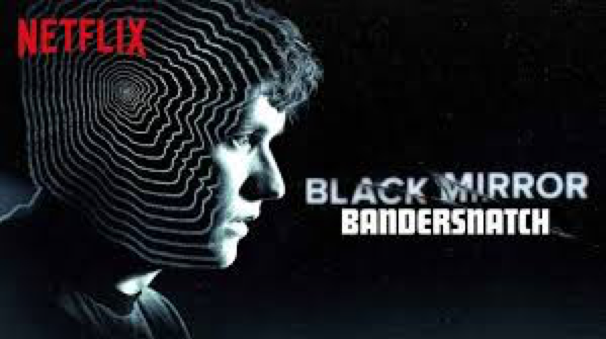
When deciding to sit down and watch a movie or a TV show, you’re expecting to be taken on a journey, one you cannot control. While it’s nice to give up control for 90 minutes, there are probably times when you wish you could flip a switch and dictate the story yourself. Like in a horror movie when you want to yell at the screen “DON’T OPEN THAT DOOR.” Or in a romantic comedy when you want to tell the main characters that they’re clearly more than “just friends.”
Interactive media looks to bridge this gap by involving and engaging the viewer in the story that’s unfolding. This article will break down the growing popularity of interactive media, what it looks like, and how it’s being used today.
What is Interactive Video?
Let’s say it’s Friday night, or movie night, in your house. You get everyone together in the living room, grab some popcorn, pick a title, and press play. But how many of those people in your living room are also on their phone or tablet? Are you?
In this day and age of multi-tasking and multiple screens, you’ve probably been guilty of being a distracted viewer. Interactive video looks to solve viewer complacency by requiring action. In turn, interactive video can turn a passive viewer into an active one.
Interactive Video vs. Video Games
Now, you may be asking “aren’t interactive videos the same as video games?” Well, the answer to that is a little bit blurry. In short, yes and no. Video games are, of course, interactive and the player is crucial to advancing the narrative. Interactive videos can also feature gamification. However, interactive videos aren’t always (and don’t need to be) in a typical “game” format. Below are some examples.
Interactive Video Commercial Example:
“Honda Presents the Other Side”
As you can see in this example, the viewer doesn’t dictate the storyline by picking between a series of obstacles like a video game or narrative. Instead, the viewer gets to see two sides of one story by simply clicking on the screen. Option 1 shows a dad picking up his kid from school, while option 2 shows a man serving as a get-away driver in a robbery. This virtually combines 2 different commercials into one for varying demographics.
Educational/Training Interactive Video Example:
"Lifesaver Mobile"
Video note: this is a pre-recorded version of a viewer making decisions
Online education or training is now pretty mainstream. A simple formula for online education is: Step 1. Watch this video. Step 2. Take a quiz on everything you just heard and saw. If you use an interactive video instead, you can make sure your audience is paying attention by quizzing them along the way. Not only that, but you can make those quizzes (and selecting the right answer) mandatory to continue the course. Cyndi Butz-Houghton, a senior producer at VMG Studios who has experience in these kinds of interactive videos, says, “it holds the person taking the course responsible for actually learning what they’re being told.”
This kind of learning is especially helpful for adults. Research has found they are self-directed learners who want to learn information that can be immediately applied. It also allows the learners to discover the information themselves; they have that "aha moment" on their own.
The example above is called Livesaver Mobile (a free app for Apple and Android users) and it teaches emergency life-saving skills. This option is more game-like then some of the other examples. It throws the user into real-life situations in which someone is choking or having cardiac arrest. The user has to choose the right decision to move on, and since the simulation is in real-time, how quickly you respond is also a factor.
Interactive Recruitment/Hiring Video Example:
“Will You Fit into Deloitte”
This option also falls a little more into the “game” format but is used as a recruitment tactic to see if a potential employee would be a good fit in the company’s culture. In this case, a viewer has to make a decision when prompted in order to move forward. There are also “right” and “wrong” answers. Rapt Media, the company that produced the video, said it outperformed a similar linear video posted on YouTube and had an average viewing time of more than 4 minutes.
Music Video Interactive Example:
Coldplay’s “Ink”
This music video follows a storyline and allows the viewer to pick the character’s next destination point. It ebbs and flows to the music for a unique, yet cohesive experience. But don’t worry, if you do zone out to the music, the video will continue playing even without your contributions to the story.
360-Degree View Interactive Example:
“It Chapter Two” Teaser
This kind of interactive is simple. The camera is situated from the viewer’s point of view so that you feel as if you’re walking through the haunted house. The 360-degree view also allows you to look at the entire scene, as if your head was on a swivel (which it probably would be if you were walking through a haunted house). This video doesn’t require interaction, so if the viewer wants to just sit back and look straight forward, they can do so.
Side-By-Side Comparison Interactive Example:
Disney’s “The Jungle Book”
Movies on DVD and Blu-Ray often have “bonus features.” This interactive video for the live-action remake of “The Jungle Book” takes those bonus features to a new level. It offers a unique perspective into how the movie is made by diving into the CGI technology. The slider allows viewers to see a side-by-side comparison of before and after-effects in real time. Besides the sliding feature, other options are made available throughout the video such as a “meet the actor” pop-up.
Benefits of Interactive Video
There are 2 primary benefits to interactive video: engagement and personalization. Statistics show it could keep your viewers’ attention for longer than a static video. A survey found viewers were 66% more engaged when watching an interactive video. Not only that, but interactive boasted a 44% longer viewing time. And bonus: 29% of people were more likely to share interactive media. Also, interactive video is fun!
As Butz-Houghton said, “interactive is exciting because it gets you involved in what you’re learning which helps you absorb it better” adding “I also love that it gives you a lot of freedom to give information in different ways.”
If you’ve produced video before, you’ve likely noticed that engagement and viewership can be the hardest to master. You may have asked “how do I get people to not only watch my video, but engage with its content?” If that’s been an obstacle in your business, interactive video may be the solution.
READ MORE: 5 BENEFITS OF IMPLEMENTING INTERACTIVE VIDEO
Challenges of Interactive Video
There are some challenges with interactive media. In this case, the main ones are time and cost. Extensive planning goes into making an interactive video, especially storyline-based narratives with multiple outcomes. Instead of just 1 story, you may be coming up with 5 storylines.
Remember in school when you learned about statistics and had to calculate the number of outcomes of a certain situation? The same math can be applied to interactive video.
Let’s say your viewer has to make 2 decisions throughout an interactive video with each decision having 2 different options. That means you’ll have 8 different storylines to create. You can almost think of it as a flow chart.

Or let’s say you want your viewers to all come to the same conclusion, but just take different paths to get there, you’ll still need to figure out various story combinations to make that happen.

This level of detail, amount of work required, and the cost also makes interactive video harder to update. Instead of changing just one item in the video, you might have to change 4 (depending on the amount of interactions in your video).
Simply put, the more time it takes, the more expensive it will be.
Interactive Video Trends
Interactive video is gaining popularity in an ever-evolving media-centric world. Netflix’s Black Mirror: Bandersnatch pushed the conversation of interactive video to the forefront. Viewers ultimately get to lead the main character’s storyline until reaching one of the 5 different main endings. And with decisions scattered throughout the movie, there are more than a trillion different variations of the narrative. You can read more about the film, which won Outstanding Television Movie at the 71st Emmy Awards, by clicking here.
While it’s not video, Google has been having some fun with interactive buttons. If you search “The Wizard of Oz” and click on Dorothy’s ruby slippers (with the sound on), you’ll get a whole new page. Check it out in the video below.
And for all those Friends fans out there (like me), check out what happens when you search Ross Geller (again, have the sound on).
Interactive continues to shift and expand into different areas of media, making it dynamic, fresh, and trendy.
Implementing Interactive Video
For the time being, it appears interactive media is here to stay and will likely continue to grow in popularity. It’s a unique offering for viewers and can keep your audience engaged with your content. And who knows, maybe one day you’ll be able to save that character in a horror movie from OPENING THAT DOOR. While interactive video is a costly commitment, if you have the means to do it, give it a try.
Click the image below to download our free creative messaging brief to organize your next video project







